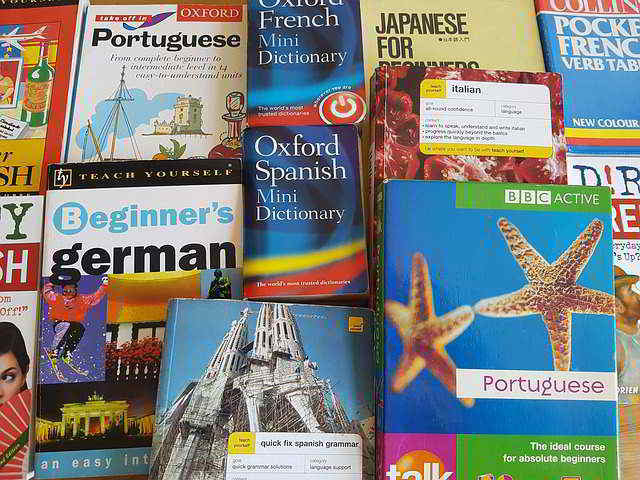A standard English dictionary contains over 170,000 vocabulary words. That’s a lot of words for students to learn! While there’s little chance that students will grow to know every word in the English language, every one they learn helps improve their ability write, speak, and communicate with the world.
To help students build their vocabulary, take them through the following steps:
1. Meet New Vocabulary Words
In order for students to pick up new vocabulary words, they must be introduced to them. Teachers often get the privilege of making the introduction. Ways teachers can introduce students to new words include:
- Sharing
visuals
Bring unfamiliar objects and animals into the classroom. Pictures provide a great visual connection, but nothing beats the real thing. For example, if you want to teach students the names of different tools, bring those tools into the classroom and let students touch them and use them (with safety in mind, of course). Want to teach names of new foods or cooking techniques? Let students touch, taste, and smell the foods.
- Describing
things
How would you describe an apple? It’s easy to say an apple is red or green, but go beyond basic descriptions to introduce new adverbs and adjectives. An apple is really shiny. Maybe it glistens. It could be crisp or mealy.
- Speaking
with synonyms
Instead of calling an object by its common name or using basic adjectives, think of synonyms and bring them into the conversation. For example, instead of saying “I’m doing well today,” you could say, “I’m splendid.” Try to think of new ways to reword responses and instructions to students and take time to explain the meaning of the new words.
- Reading a
variety of texts
A great way to encounter new words is by reading texts that contain unfamiliar words. Domain-specific texts, such as scientific stories or articles, can help students pick up subject-specific vocabulary words. Reading an older text versus a newer text might help students discover words that are not used as frequently today, but can still benefit their vocabulary.

2. Recognize New Words
Once students have learned new words, the next step is to recognize those words when they see them again. Repeated exposure to the words is key to help students remember vocabulary words. This is where fun games can come into play. Some popular vocabulary recognition games include:
- Bingo
Make your own custom bingo cards with either words or definitions. To play the game, call out the definition and have students check off the correct word or, if you use definitions on the bingo card, call out the word and have students check off the correct definition.
- Matching/Memory
Create a vocabulary matching worksheet where students must match words to their definitions or print words and definitions on index cards, flip them upside down, and have students take turns flipping them over to find matches.
- Word
Scramble
Make your own word scramble game to simply help students recognize words based on their spelling. You can require students to say the definition of the word or point to the definition on a separate sheet of paper to add an additional level of difficulty.
3. Use New Words
To help fully cement new vocabulary words to memory, students need to put the words to use. Some ways to help students use the words include:
- Make up
definitions
Have students put the definition of a word in their own words. You can combine this activity with word recognition by having other students in the class try and guess which word each student defined.
- Write a
story
Encourage students to write short stories that use the new words they have learned. Check their stories to ensure the words are used correctly in context.
- Fill in
the blanks
Come up with sentences that use words students are learning, but leave out the words and see if students can fill in the blanks with the correct words. You can even use sentences from stories students have written to make the activity more exciting.
- Describe
something
Ask students to use their new words to describe someone or something to the rest of the class. You can also play the “I’m thinking of a word game” and have students give clues to get other class members to guess their word.
4. Master New Vocabulary Words
Students have truly mastered new words when they regularly recognize and use them. Throughout the year, randomly throw words students have already learned into reading passages, vocabulary games, and other classroom activities. Also take time to point out when you see students using words they have learned without being prompted to do so.
For more steps to teach vocabulary, check out BusyTeacher’s 10 Fabulous Ways to Teach New Words.


I every time spent my half an hour to read this website’s articles or reviews every day along with a mug of coffee.